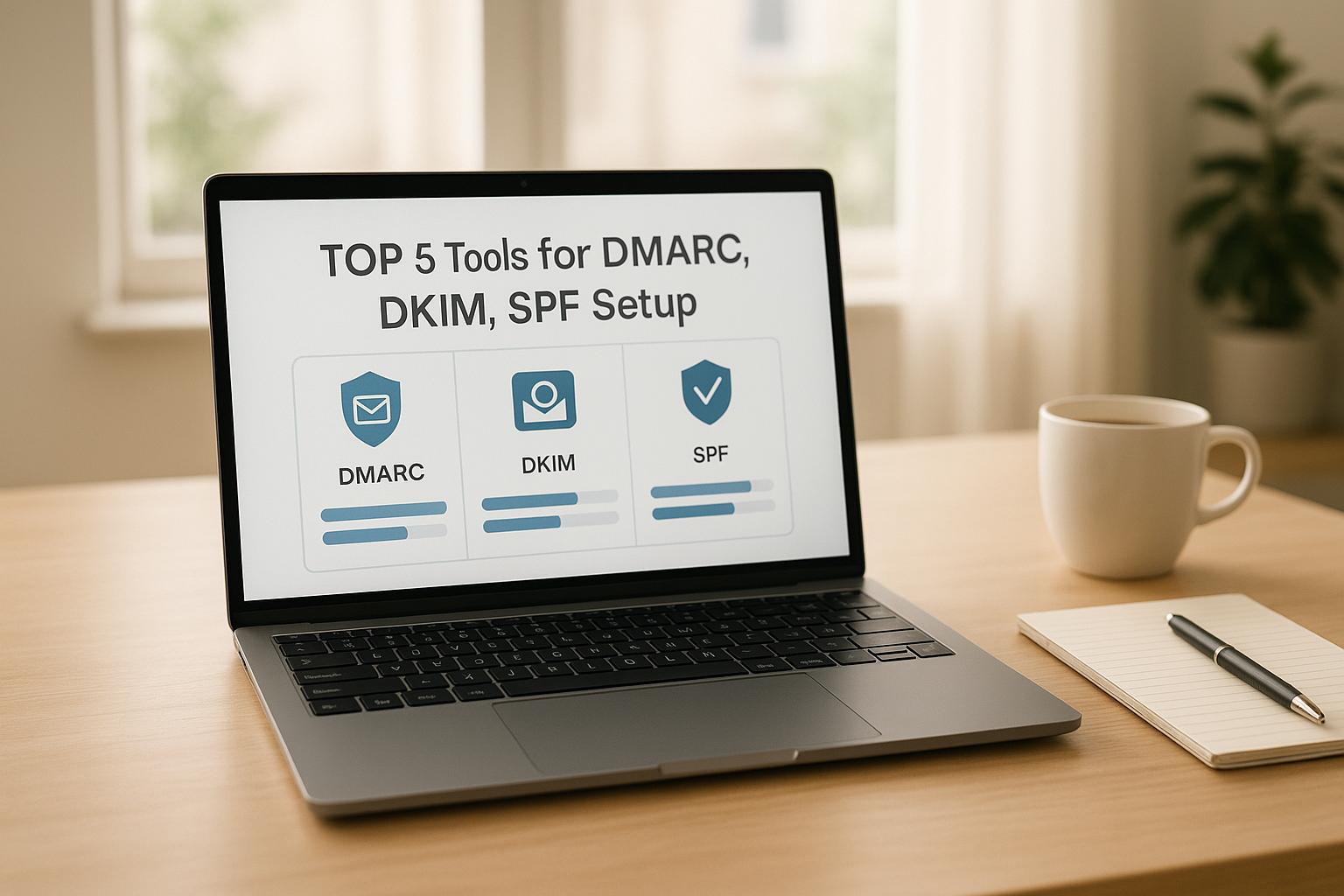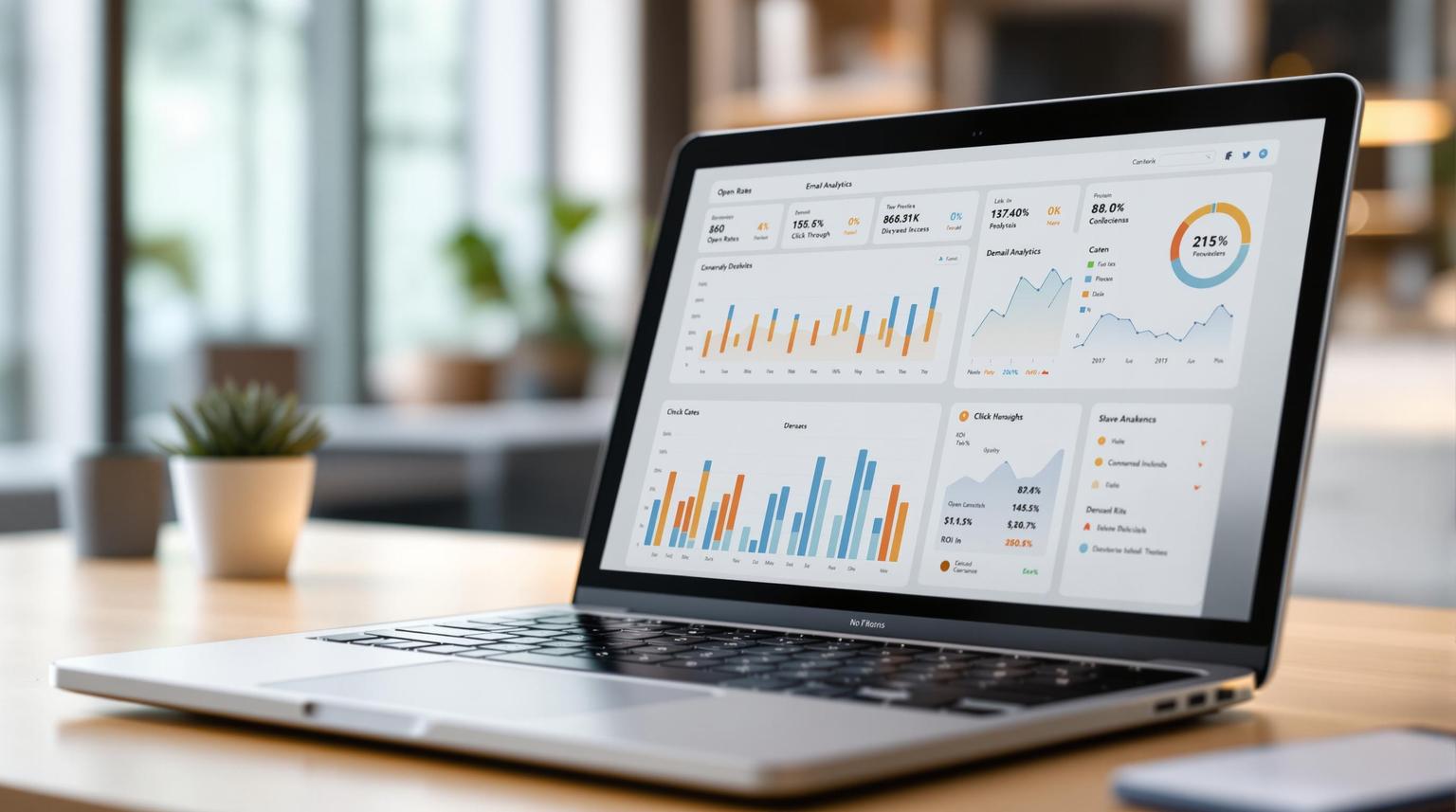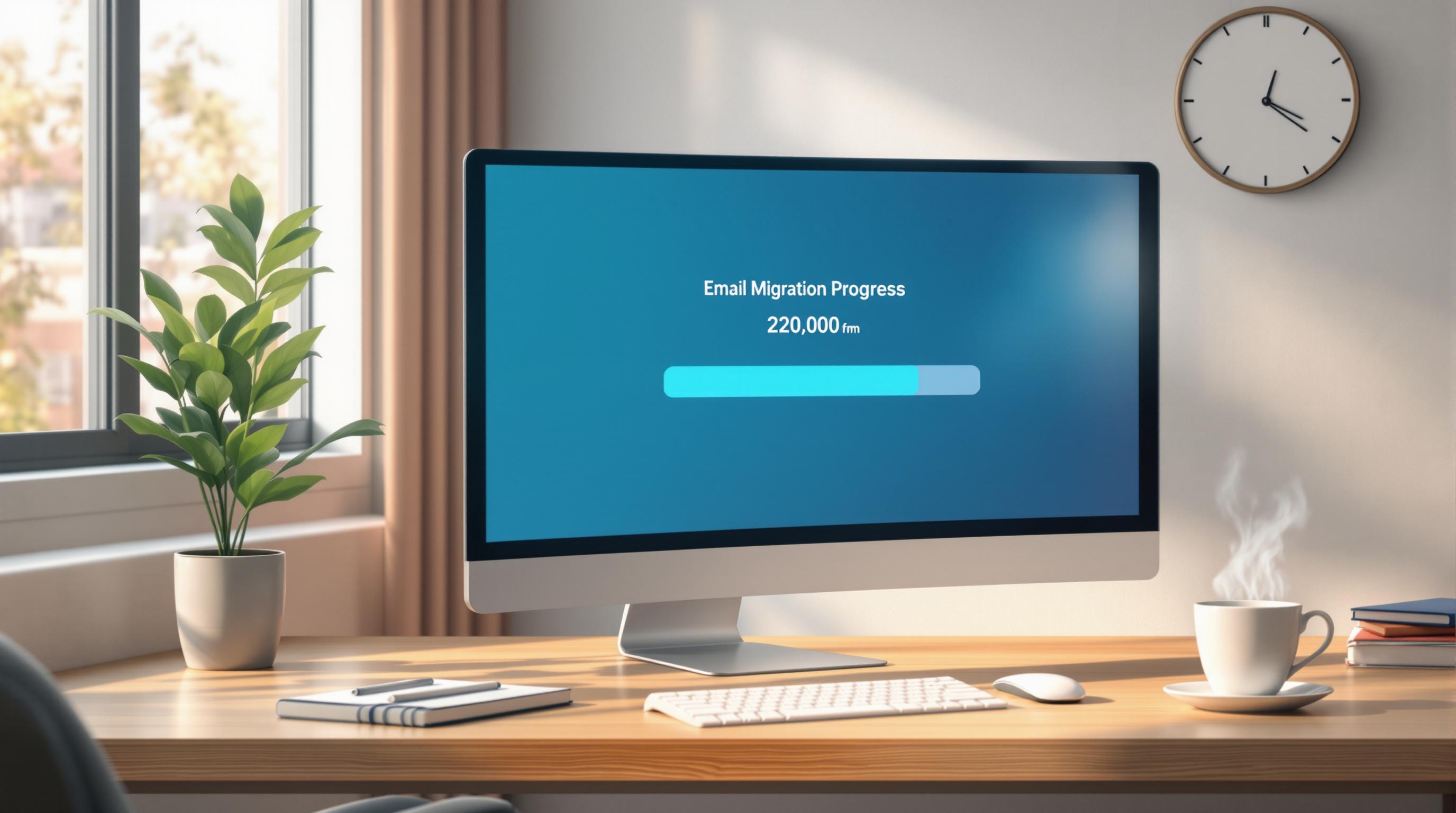A/B testing (or split testing) compares two email versions to find what works best. By testing elements like subject lines, CTAs, or send times, you can boost open rates, clicks, and conversions. Here's how to do it in 5 simple steps:
- Set Clear Goals: Decide what to improve - open rates, clicks, or conversions.
- Choose What to Test: Test subject lines, CTA buttons, email content, or send times.
- Set Up Your Test: Use tools to split your audience and automate testing.
- Run and Monitor: Send emails, track metrics like open and click rates, and wait for results.
- Analyze Results: Identify what worked, apply insights, and keep testing.
To get started, focus on one variable at a time - like testing subject lines for better open rates. Use email tools with built-in A/B testing features for easier setup and analysis.
Step 1: Set Clear Goals for Your A/B Test
Choose Metrics to Measure
Focus on metrics that tie directly to your business goals. For example:
- Open rates: Evaluate how effective your subject lines are.
- Click-through rates (CTR): Measure audience engagement with your content.
- Conversions: Assess the business impact of your email.
- Unsubscribe rates: Gauge audience satisfaction.
Choose metrics that align with your campaign's purpose. If you're aiming to drive engagement, CTR might be your main focus. For sales-driven campaigns, conversions should take priority. To get a full picture of your email's performance, track both primary metrics (like CTR) and secondary data (such as time spent reading).
Define Specific Goals
"Testing without a specific goal in mind is just wasting time." - Mailjet Blog, "Email Marketing A/B Testing – A Complete Guide" [1]
Set goals that are specific, measurable, and time-bound. For instance, if your current open rate is 15%, aim to increase it to 20% within a month. Use your baseline metrics to set realistic targets and ensure these goals support larger business objectives, like boosting quarterly sales.
Keep in mind external factors that could impact your results, such as:
- Seasonal trends in engagement
- Time zones and optimal sending schedules
- Industry benchmarks for performance
- Characteristics of your audience segments
Most email marketing platforms, often listed in the Email Service Business Directory, include built-in analytics tools to help you track progress and measure results. These tools make it easier to compare your test outcomes to your predefined goals.
Always connect your testing goals to your company’s broader targets. For example, if your business plans to grow sales by 25% this quarter, focus on improving conversion rates or CTR to help meet that objective.
Step 2: Decide What to Test
Email Elements You Can Test
When running A/B tests for email campaigns, focus on the parts of your emails that directly affect key metrics:
- Subject Lines: Try different lengths, tones, or personalization to boost open rates.
- Call-to-Action (CTA): Test button colors, wording, placement, or design to increase clicks.
- Email Content: Experiment with:
- Copy length
- Writing style
- Structure of paragraphs
- Personalization details
- Visual Elements: Compare product images vs. lifestyle photos, adjust image placement, or test how many images to include for better engagement.
- Send Times: Test different days or times to see when your audience is most likely to engage.
After identifying what to test, the next step is figuring out which elements to prioritize for the best outcomes.
How to Prioritize Test Elements
To get the most out of your testing, focus on elements that align with your goals and have the biggest potential impact:
| Element | When to Prioritize | Impact Level |
|---|---|---|
| Subject Lines | Low open rates | High |
| CTAs | Poor click-through rates | High |
| Email Content | High bounce rates | Medium |
| Visual Elements | Low engagement | Medium |
| Send Times | Inconsistent performance | Medium |
For instance, if improving open rates is your goal, start by testing subject lines since they directly affect this metric.
Key Factors to Consider:
- Frequency of Use: Focus on elements in emails you send often - this lets you collect data faster.
- Ease of Testing: Many email platforms have built-in tools for testing subject lines and CTAs, making them easier to tweak.
- Audience Size: Subject line tests might need larger audiences because open rates tend to be lower than click-through rates, requiring more data for reliable insights.
Once you've chosen which elements to test, use tools from the Email Service Business Directory to run and analyze your tests effectively.
Step 3: Set Up Your Test
Choose the Right Email Tool
The email tool you use can make or break your A/B testing. Look for these key features:
- Automated Split Testing: Ensures your audience is divided fairly (e.g., Mailchimp, Mailjet).
- Statistical Analysis: Helps confirm whether your results are valid (e.g., Campaign Monitor).
- Segmentation Options: Lets you target specific groups effectively (e.g., Mailjet, Mailchimp).
- Real-time Reporting: Gives you instant performance updates (e.g., Campaign Monitor).
You can explore platforms in the Email Service Business Directory to find tools with these capabilities.
Segment Your Audience
Creating accurate test groups is crucial for reliable results. Here’s how to do it:
Define and Randomize Your Test Groups
- Use 10-20% of your audience to ensure your test has enough data.
- For example, if you have 10,000 subscribers, select at least 2,000 contacts (split into 1,000 per variation).
- Most email tools automatically randomize groups, reducing the risk of bias.
Once your audience is segmented, you're ready to focus on crafting the email variations for your test.
Create Email Variations
Your email versions should be nearly identical, except for the one element you're testing. Stick to these tips:
Tips for Effective Testing:
- Change just one element at a time (e.g., subject line or button color) to isolate its impact.
- Keep detailed notes on each variation for easy comparison later.
- Start with elements that matter most - subject lines often make the biggest difference.
- Double-check both versions to avoid errors.
Example Test Setup:
- Version A: A blue button with the text "Start Your Free Trial."
- Version B: The same blue button but with the text "Begin Your Journey."
Everything else in the emails should stay exactly the same to ensure the test results are accurate.
Step 4: Run and Monitor Your Test
Send Emails to Test Groups
Leverage your email platform's A/B testing tools to execute your test. Before hitting "send", double-check these critical elements:
| Element | Action Required |
|---|---|
| Test Group Size | Use 10-20% of your email list |
| Random Distribution | Ensure groups are assigned without bias |
| Timing | Schedule emails during peak engagement hours |
| Tracking Setup | Enable performance tracking features |
Let the test run for 30 minutes to 24 hours. This timeframe strikes a balance, giving you enough data to make informed decisions while keeping your campaign on schedule.
Track Performance Metrics
Once your test emails are sent, it’s time to track their performance. This step is crucial for figuring out which version is the winner. Focus on key metrics like open rates, click-through rates, and conversions to measure success.
Key Metrics to Monitor:
| Metric | What It Tells You |
|---|---|
| Open Rate | How engaged your recipients are |
| Click Rate | Effectiveness of your CTA and content |
| Conversion Rate | How well you’re achieving your goals |
| Bounce Rate | Potential deliverability problems |
Tips for Monitoring:
Use your email platform’s analytics dashboard to keep tabs on performance. Look for clear differences between the test versions - like a 5% boost in open rates or clicks - to identify the better option.
Statistical Significance: Wait until you’ve collected enough data to ensure your results are reliable. Many email tools, such as Mailjet, can calculate this for you automatically.
"The duration of an A/B test can vary, but it is generally recommended to run tests for at least 30 minutes to 24 hours to capture a representative sample of user behavior. This timeframe allows you to gather enough data to make statistically significant conclusions about which variation performs better." [2]
sbb-itb-6e7333f
Step 5: Review and Use the Results
Analyze Test Results
Once you've gathered enough data, it's time to dig into your A/B test results. Focus on the metrics you set as your success indicators and look for insights that can lead to better performance.
| Analysis Step | Key Considerations |
|---|---|
| Result Reliability | Use your email tool's analytics to confirm accuracy |
| Primary Metrics | Compare open rates, click-through rates (CTRs), and conversions |
| Sample Size | Ensure you’ve collected enough data for meaningful insights |
| External Factors | Consider timing, seasonality, or other external influences |
Don't just stop at surface-level numbers. For instance, if a subject line test shows a 5% higher open rate, use your platform's tools to confirm the reliability of this result. Once you're confident in your findings, integrate these winning elements into your overall email strategy.
Apply Findings to Future Campaigns
Take what you've learned and turn it into real improvements for your email campaigns.
How to Implement Findings:
- Update your email templates and share successful strategies with your team.
- Document what worked and why, so you can replicate success in the future.
- Build a knowledge base to keep track of past tests and their results.
Remember, different audience segments may respond differently. Use your CRM data to customize successful elements for specific groups.
Keep Testing for Better Results
A/B testing isn’t a one-and-done activity. It’s a continuous process that helps you adapt to changing audience preferences. Start by refining the basics, then build on what works while experimenting with new ideas.
If you're looking for advanced tools to support your testing efforts, check out the Email Service Business Directory for options that match your needs.
How to A/B Test Your Emails
Tips for Effective A/B Testing
Beyond the basic steps, applying these practical tips can help you get better results from your A/B tests.
Test One Variable at a Time
Stick to testing a single variable to pinpoint its exact effect on performance. If you change multiple things at once, it becomes impossible to tell which one caused the outcome.
Here’s a quick breakdown:
- Testing one variable gives clear answers but takes more time.
- Testing multiple variables is quicker but leaves you guessing about the results.
- Sequential testing lets you build on earlier insights while keeping things clear.
Focus on High-Impact Changes First
Start with elements that can make the biggest difference:
- Subject Lines: These influence open rates and are quick to test.
- Call-to-Action (CTA): Small tweaks to text, color, or placement can significantly boost click-through rates.
Make Testing Easier with Tools
Many email platforms offer features like automation, segmentation, and analytics to simplify A/B testing. Take advantage of these tools to save time and get actionable insights faster.
Conclusion
A Quick Recap of the 5 Steps
To run effective A/B tests on your email campaigns, follow these five steps: set clear goals, choose what to test, set up your tests, run and monitor them, and analyze your findings. This approach removes guesswork, letting you make smarter, data-backed decisions to improve your campaigns. With this roadmap, you're ready to dive in and start optimizing.
Start Your A/B Testing Journey
Ready to jump in? Start small by testing one variable - like subject lines - using tools designed for marketers of all experience levels. The Email Service Business Directory lists platforms with features like automated testing and analytics to help you get started easily. Over time, expand your testing to cover more elements as you learn what works best for your audience. Keep testing regularly, and adapt as your audience's preferences change.
FAQs
When performing email A/B tests?
A/B testing helps you compare two versions of an email to see which one performs better based on metrics like open rates or conversions. Here’s what you need to keep in mind for accurate results:
Sample Size: Make sure your sample size is big enough to get meaningful results. For example, if you have 10,000 subscribers, divide them into two groups of 5,000. Many email platforms can calculate the right sample size for you based on your list size and confidence level.
Timing and Duration: Run the test for at least 24 hours to account for time zone differences. Metrics like open rates usually stabilize within 24 hours, but conversions might take a few days to give a clear picture.
What to Test:
| Element | Test Options |
|---|---|
| Subject Lines | Length, tone, personalization |
| CTAs | Button color, text, placement |
| Content | Layout, images, copy length |
| Send Times | Day of week, time of day |
For more details on these elements, check out Step 2. Once the test is complete, analyze the results and use what you’ve learned to improve future campaigns.


